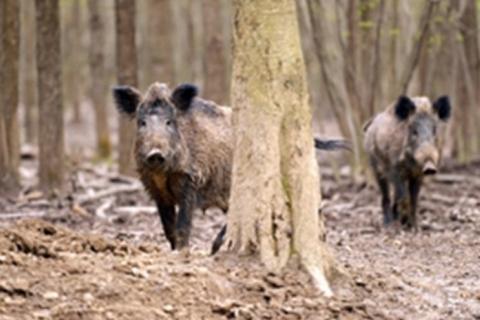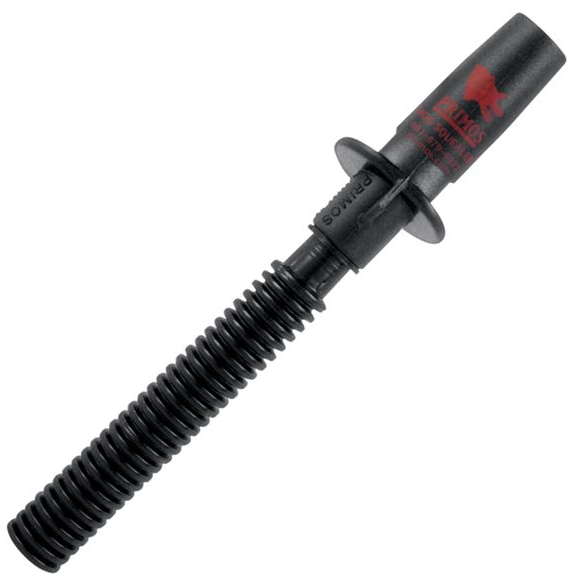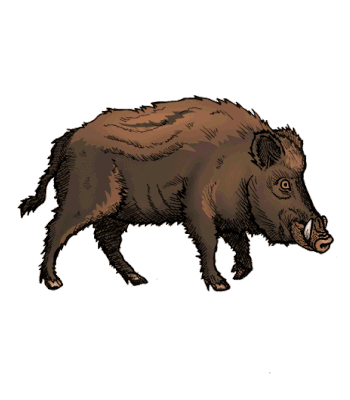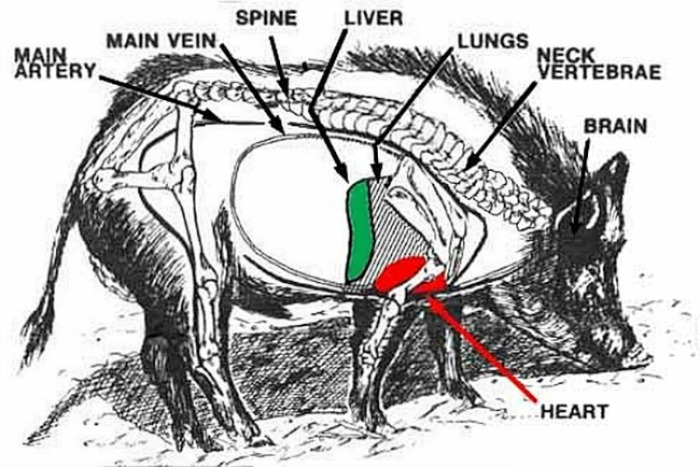
You’ll find wild hogs mostly in the southern Gulf states like Texas, Florida, Mississippi, Alabama and Louisiana, as well as in some neighboring states like Arkansas.
 North and east Texas provide some of the best wild boar hunting in America. Add in that Texas has fairly lenient regulations on pig hunting, and you can enjoy private-land hunting year round with just a basic hunting license. There are even public lands available, though they are a little more rare.
North and east Texas provide some of the best wild boar hunting in America. Add in that Texas has fairly lenient regulations on pig hunting, and you can enjoy private-land hunting year round with just a basic hunting license. There are even public lands available, though they are a little more rare.
Feral hogs have been known to attack small animals like rabbits, but also household dogs and cats. While it is rare for a hog to attack a dog unprovoked, many landowners, especially in places like Texas, have been using hog hunting with increasing regularity as a way to reduce the population.
So what do beginning and intermediate hog hunters need to know about taking on these animals that can grow up to 400 pounds? I've listed six quickhunting tips you should know before you head out on a hog hunt plus rifle caliber chart for choosing the perfect ammo.
 |
| The Primos Hog Squealers Hog Call reproduces the squal of a hog |
1. Use the Wild Pig Territorial Traits Against Them
Wild pigs love a good fight. While this makes for dangerous hunting, it also means that these territorial swine will often respond to hog calls like the Primos Hog Grunter better than other wild animals. So when you spot a hog you want to take down, even if it’s hidden among thickets and bedding nests, give it a good strong call, and you’ll be surprised how often it comes out to greet you.
2. Choose the Right Firearm
Hogs are more likely to attack when shot than, say, a deer or elk, and unless your shot is perfectly placed in the heart, one bullet will not bring down a wild hog. So if you’re going hog hunting, only use multi-shot high-powered rifles, revolvers and pistols for your protection against an aggressive and tough animal.
Alternatively, consider using a shotgun with a choke to provide you with a tight pattern that will take the hog down.
 3. Pick Your Hog Hunting Ammo
3. Pick Your Hog Hunting Ammo
As mentioned before, bringing down a hog is no easy task. High velocity ammo like hollow-point hard-cast bullets that can pack a punch are a good choice.
![]() TIP: Rifle Caliber Chart - LINK
TIP: Rifle Caliber Chart - LINK
4. Take Safety Shots From a Distance
It’s a good idea to always take another shot at a pig once you’ve tracked it. Pigs can play dead and may attack if you get too close, so approach noisily and shoot the pig again from at least 15-20 yards, even if it looks dead.
Understand, when considering shot placement, it's common for a hog's fat to plug entry and exit wounds. This may slow, stop or delay your blood trail. Also, a feral pig's vital organs are low and forward.
5. Shot Placement on a Wild Pig With a Rifle
 Don't shoot a hog like you would a whitetailed deer. Compared to a deer, a feral pig’s vitals are much lower and more forward. The most effective shot placements are behind the ear and broadside, through both front shoulders. This will result in a quick and humane kill with a speedy recovery of your quarry.
Don't shoot a hog like you would a whitetailed deer. Compared to a deer, a feral pig’s vitals are much lower and more forward. The most effective shot placements are behind the ear and broadside, through both front shoulders. This will result in a quick and humane kill with a speedy recovery of your quarry.
6. Disease Concerns
Wild hogs are notoriously good carriers of parasites like roundworm and disease like pseudorabies (which can be fatal to livestock and pets and, despite it’s name, is not related to rabies) and swine brucellosis. If you see signs of disease or parasite infestation in the pig, discard the carcass, as it is not safe to handle or eat.
Always wear disposable plastic or rubber gloves along with eye protection when field dressing a wild hog, and take extra precaution to cook the meat thoroughly, even if there are no visible warning signs of infestation.
Calibers for Hunting Hogs

![]() Check out these tips to stay safe while hunting wild boar.
Check out these tips to stay safe while hunting wild boar.
So get out and hunt those hogs year round. And be sure to share your hunting tips in the comments.
- 113609 views


